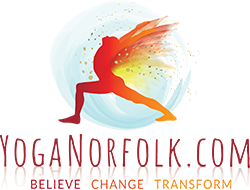Yoga and pain management
Yoga is an ancient system developed in India that addresses the physical, mental and spiritual aspects of the individual. There are many different forms of yoga practice, each of which emphasizes different skills and goals. Hatha yoga, the path of the body, is the most well known approach in the United States and is used here mainly as a form of exercise and stress management. Within Hatha yoga, there are many different approaches. Some techniques are physically strenuous and demanding, while others are gentle and slow, focusing as much on the meditative aspects of practice as on physical development. This variety in approaches allows the individual to participate in yoga practice at a level that is both appropriate to one’s physical abilities and mental/emotional/spiritual goals. Kripalu yoga consist of a series of gentle postures (asanas), breath work and meditation that emphasize flexibility, stretching, stress reduction and increased vitality to enhance balance of mind, body and spirit. The Iyengar style, created by B.K.S. Iyengar, focuses on understanding how the body works and on postural alignment to increase strength and flexibility for better health. This style is characterized by the use of various props, such as cushions, benches, wood blocks and chairs to achieve postures that are held for a longer amount of time than in many other yoga styles. Bikram yoga is a system of 26 postures performed in a standard sequence in a room heated to 85-110 degrees Fahrenheit, providing a fairly vigorous work out designed to cleanse the body. Ashtanga yoga is a physically demanding series of fast-paced postures performed in a continual flow using dynamic breath and other techniques. This practice offers a physical challenge in order to build strength, flexibility and stamina.
The potential benefits of yoga in pain management have begun to be documented. Studies have shown its positive effect on stress through a decrease in serum cortisol levels and increase in brain alpha and theta waves. It may also be of benefit by increasing self-awareness, relaxation on physical and emotional levels, respiration, and self-understanding (Nespor, 1991). Decreased stress may positively influence the emotional component of pain. On this basis, it has been advocated as part of a multimodality program for back pain (Nespor, 1989). In clinical studies, yoga has reduced the pain of osteoarthritis and carpal tunnel syndrome (Garfinkel, 2000), and promoted stress reduction and positive mood (Kerr, 2000; Schell, 1994). In a recent study, the combination of yoga and meditation was more effective than standard medical treatment alone for the management of chronic pain patients (Randolph, 1999). A combination of yoga and meditation is an integral and successful part of the well-known Stress Reduction and Relaxation Program founded by Jon Kabat-Zinn at the University of Massachusetts for chronic pain patients.
The Western Movement Systems, like the Eastern systems, are often tried by patients with chronic pain. Pain specialists have limited awareness of these approaches and they are only rarely incorporated into routine therapy.
http://www.healingchronicpain.org/content/introduction/comp_movement.asp
